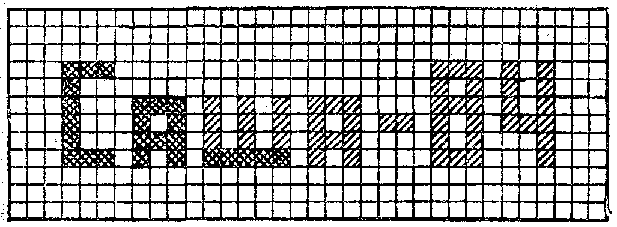
Kratkaya Annotaciya K Risunku Primer
Mezhdunarodnaya Kniga predlagaet Vashemu vnimaniyu ocherednoj katalog knizhnyx novinok po xudozhestvennoj literature, filosofii, religii, istorii, politike i pravu, e`konomike, na. Creatine Kinase is actually a type of blood test. It checks for raised blood levels of certain brain and muscle enzyme proteins.
'Fingerases' Bodily fluids such as perspiration are rich in RNase activity (we jokingly refer to RNases from these sources as 'fingerases'). Thus, the use of ungloved hands could easily result in RNase contamination compromising critical experiments. Use gloves and make it a point to discard used gloves and don a new pair frequently during experiments.
Tips & Tubes Tips and tubes can be an easily overlooked source of RNase contamination. Merely autoclaving will not destroy all RNase activity, since these enzymes are very robust and can regain partial activity upon cooling to room temperature. Always use tips and tubes that have been tested and certified RNase-free. Ambion has a broad selection of certified RNase-free tips and tubes. Water and Buffers Due to the ubiquitous nature of RNases, the water and buffers used in molecular biology applications can be frequent sources of RNase contamination.
DEPC-treatment is the most common method used to inactivate RNases in water and buffers. However, certain reagents such as Tris cannot be DEPC-treated.
Ambion provides a variety of buffers, and water (DEPC and non DEPC-treated), that are guaranteed RNase-free. An alternative to DEPC-treatment, RNAsecure, is also available that can be used to treat primary amine solutions such as TRIS and does not require a 2 hr treatment nor autoclaving.
Laboratory Surfaces Contact with laboratory benchtops, glassware, plasticware, and other surfaces that are left exposed to the environment can lead to the introduction of RNase contamination into crucial experiments. These surfaces get contaminated due to the presence of bacterial and fungal spores present in many laboratory environments. Likewise, dead cells shed from human skin can also lead to contamination of exposed surfaces.  These surfaces can be treated with an RNase decontamination solution such as Ambion's RNaseZap®. Glassware and metalware can be baked overnight (6 to 8 hours is sufficient) at 450°F to inactivate RNases.
These surfaces can be treated with an RNase decontamination solution such as Ambion's RNaseZap®. Glassware and metalware can be baked overnight (6 to 8 hours is sufficient) at 450°F to inactivate RNases.
Endogenous RNases All tissue samples contain endogenous RNases. In lieu of immediate processing, liquid nitrogen is often used to rapidly freeze tissues after harvest to minimize RNA degradation. However, freezing tissue in liquid nitrogen is not always convenient, especially if large numbers of samples need to be preserved. Ambion's RNAlater™ is a tissue storage and stabilization solution that preserves RNA within tissues and cells. The pieces of tissue can be simply dropped into 5 to 10 volumes of RNAlater and stored at 4°C for up to a month prior to RNA isolation.
RNA Samples Small amounts of RNases that may co-purify with isolated RNA can compromise downstream applications. Such contamination can also be introduced from tips, tubes, and other reagents used in these procedures. RNase inhibitors are commonly used as a precautionary measure in most enzymatic manipulations of RNA to keep such contaminants in check. Ambion's SUPERase•In™ is the only RNase inhibitor that inhibits RNases A, T1, and RNase 1 (placental ribonuclease inhibitor (RI) only inhibits RNase A). Plasmid Preps Plasmid DNA used for in vitro transcription and coupled transcription:translation reactions can introduce RNase contamination into reactions. Many researchers degrade the RNA in plasmid preps by RNase treatment.

If this procedure has been used, Ambion recommends a Proteinase K treatment followed by a phenol:chloroform extraction to eliminate all traces of RNase prior to subsequent reactions. If the DNA template has been linearized by restriction enzyme digestion, a similar treatment is recommended, since restriction enzymes may be contaminated with RNases. RNA Storage The presence of trace amounts of RNase can compromise RNA integrity even if the samples are stored frozen in an aqueous environment.